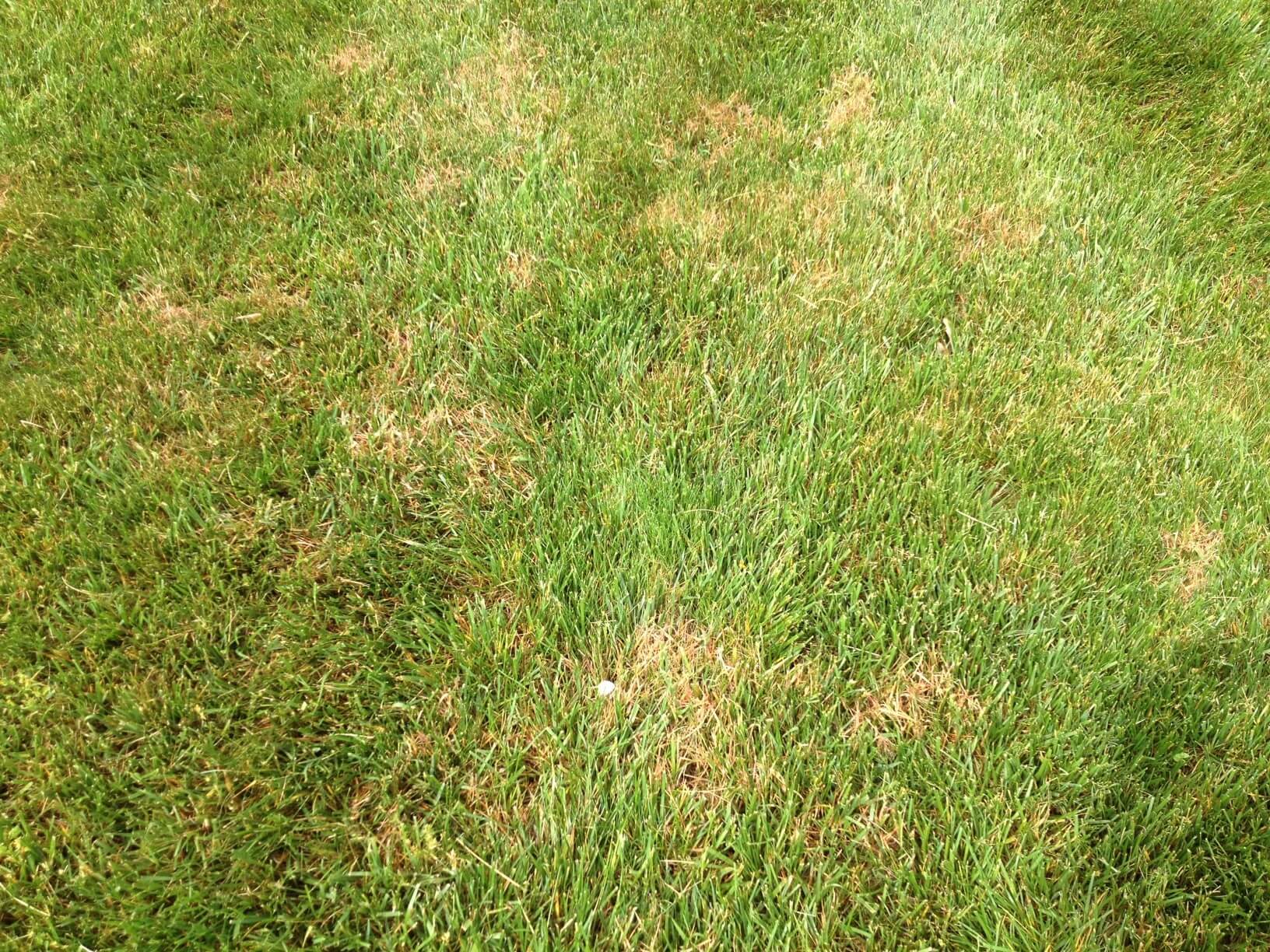Disease pathogens are present in most lawns and can be triggered when lawns are stressed and weather conditions are right. Typically in warm, humid weather. Prevention is the best strategy for managing lawn diseases. Proper mowing, fertilization, improving poor drainage and increasing air circulation will help fend off serious problems. Fungicides can be applied preventively but will not ‘cure’ the disease. They suppress the symptoms so the disease does not damage the lawn. Cooler temperatures often help lawns recover from disease naturally. If by the fall the grass has not recovered the dead areas should be reseeded. Red thread and brown patch lawn disease are the two main diseases affecting Maryland lawns
Red Thread
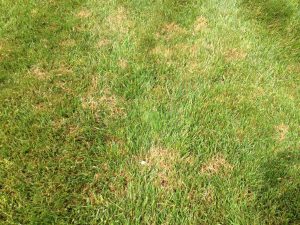
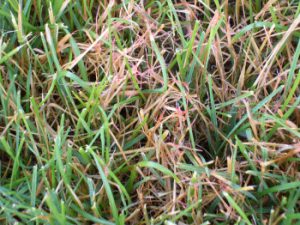
Red thread disease is a turf disease that likes cool, wet spring weather. It likes temperatures in the 60’s and low 70’s with high humidity and in soils with high moisture content. It is an interesting lawn disease because of the red fungal mycelium (strands) that are visible to the naked eye.
The disease develops in circular or irregular patches from 4 inches to 2 feet in diameter. Affected leaves within these patches are tan or bleached-white in color. From a distance, the patches usually have that reddish appearance, due to the presence of thick, red strands of fungal growth emanating from the affected leaves. It is through the production of these “red threads” that the fungus spreads to healthy plants and survives unfavorable conditions. After prolonged periods of disease development, the patches may merge to produce large irregularly shaped areas of damaged turf.
Soils that have little or no topsoil and organic matter and don’t hold nutrients are susceptible to Red Thread and Pink Patch as well. Generally, only in the worst cases of these two lawn diseases is it necessary to spray fungicides. There would need to be a prolonged period of cool weather to necessitate control products. A few hot, dry days usually will eliminate the symptoms.
Here is a fact sheet from the University of Maryland that explains the disease in more detail:
TT-24_Red_Thread.pdf
Brown Patch Lawn Disease
Brown Patch lawn disease occurs in Maryland during warm, humid weather. The combination of daytime temperatures that are over 85°F and nighttime temperatures that stay above 65° F with little airflow leaving the grass moist for over eight hours is the perfect condition for this turf disease. You can identify Brown Patch by its symptoms. Light tan lesions with dark brown edges across the middle or tips of the grass blades are signs you might have Brown Patch. On mornings with abundant dew, you will actually be able to see the signs of the fungal mycelium which look like cottony structures.
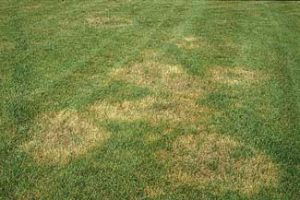
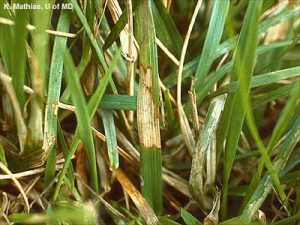
It is mainly a problem with improved varieties of Tall Fescue. If you have a variety that is especially susceptible to Brown Patch disease and the ideal environmental conditions are expected for an extended period of time, you might need to have your lawn treated with a fungicide to prevent having to reseed the lawn in the fall. However, if a cold front is expected within a few days to lower the humidity and nighttime temperatures, it may not be necessary to spray. Brown Patch can disfigure a lawn but the disease does not kill the crown of the grass and recovery is possible provided we are not in the middle of a drought.
If you suspect you have Brown Patch disease, avoid nighttime watering if you can. Afternoon and evening showers and thunderstorms on a humid night set up the ideal conditions for Brown Patch disease. Preventative fungicide application can be used to suppress the disease as well.
More information on Brown Patch:
TT15-Brown-Patch-UMD

